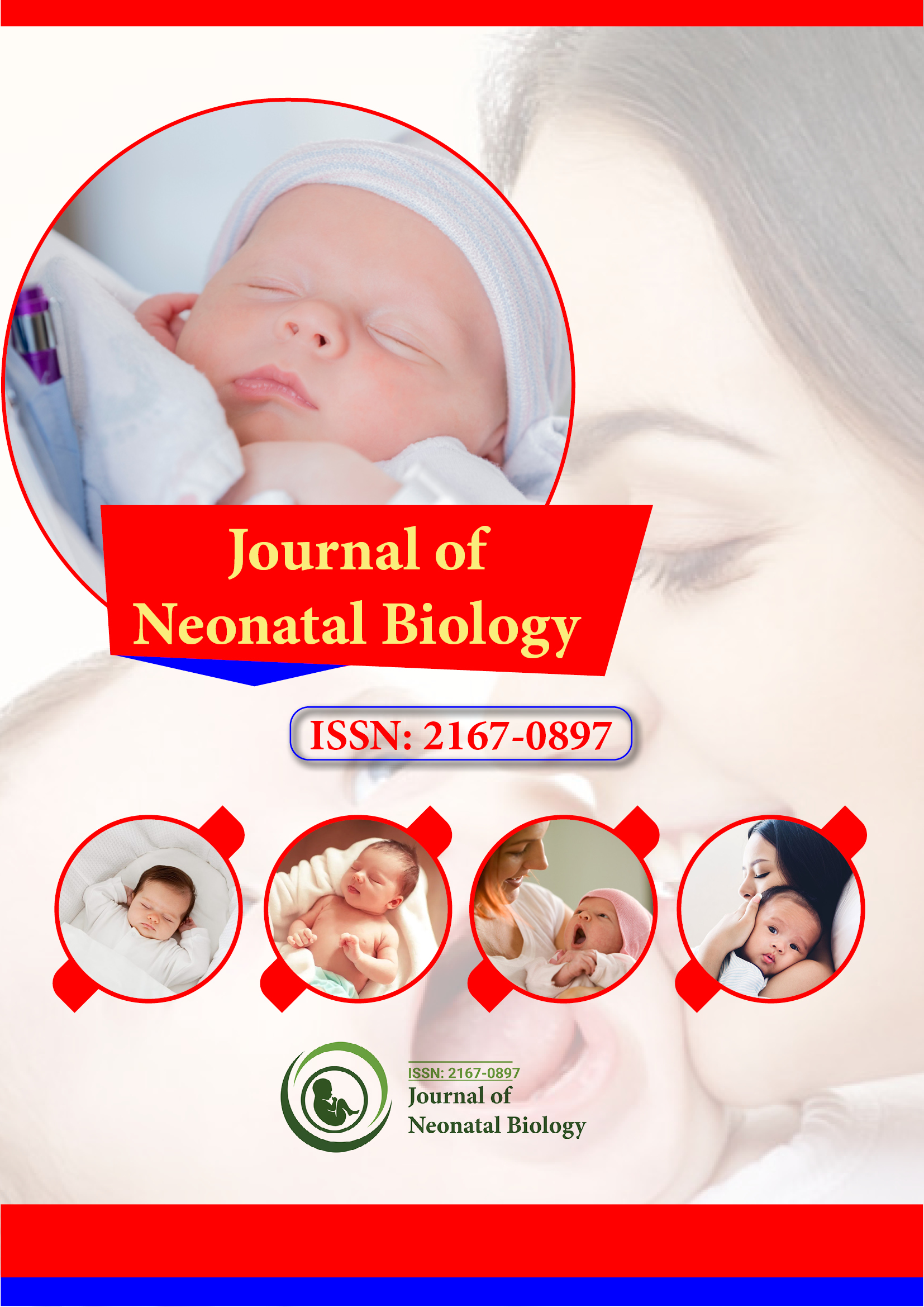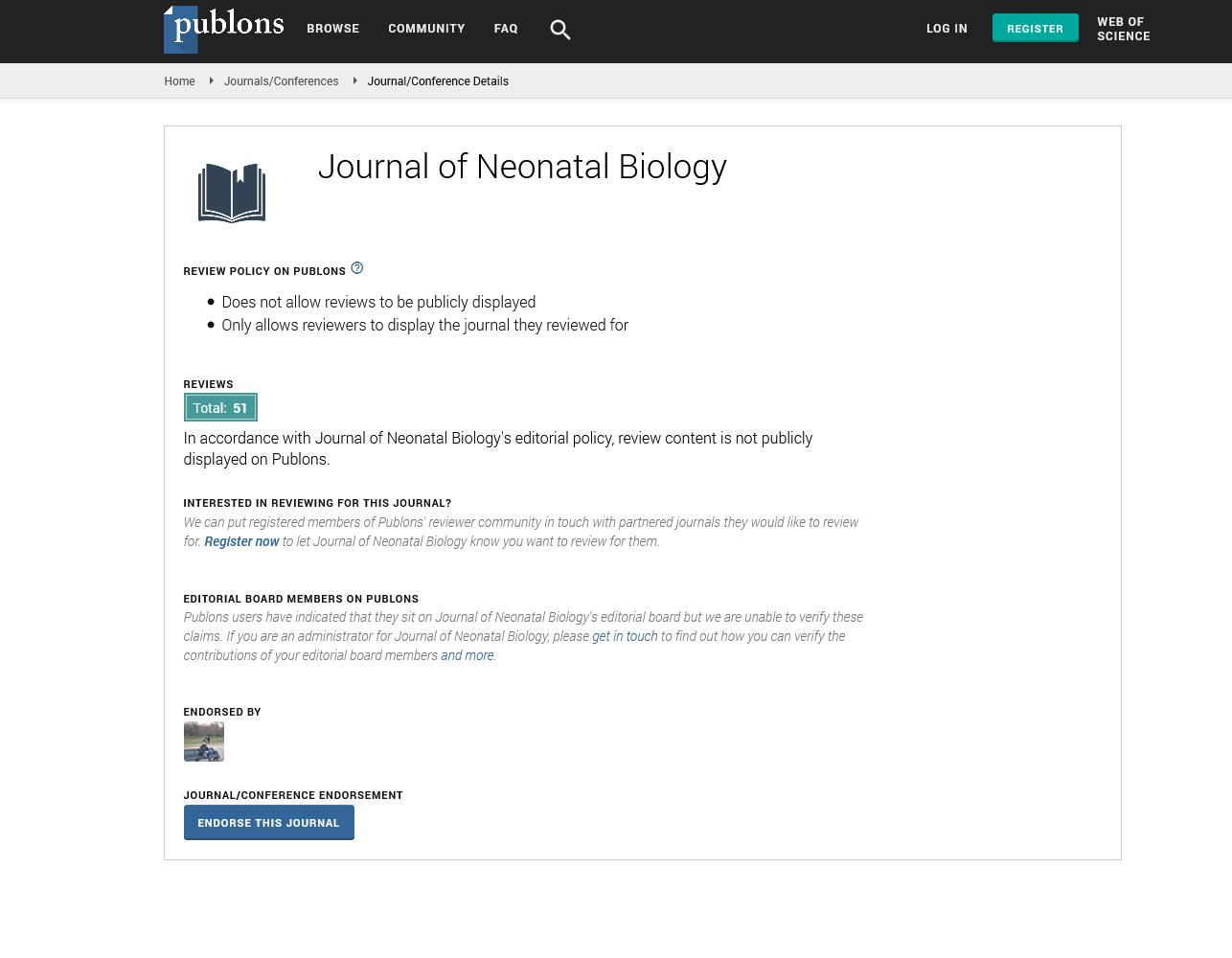Indexed In
- Genamics JournalSeek
- RefSeek
- Hamdard University
- EBSCO A-Z
- OCLC- WorldCat
- Publons
- Geneva Foundation for Medical Education and Research
- Euro Pub
- Google Scholar
Useful Links
Share This Page
Journal Flyer

Open Access Journals
- Agri and Aquaculture
- Biochemistry
- Bioinformatics & Systems Biology
- Business & Management
- Chemistry
- Clinical Sciences
- Engineering
- Food & Nutrition
- General Science
- Genetics & Molecular Biology
- Immunology & Microbiology
- Medical Sciences
- Neuroscience & Psychology
- Nursing & Health Care
- Pharmaceutical Sciences
Perspective - (2022) Volume 11, Issue 9
Predicting Methods for Outcome in Perinatal Asphyxia
Jeffrey Neil*Received: 01-Sep-2022, Manuscript No. JNB-22-18325; Editor assigned: 06-Sep-2022, Pre QC No. JNB-22-18325 (PQ); Reviewed: 22-Sep-2022, QC No. JNB-22-18325; Revised: 29-Sep-2022, Manuscript No. JNB-22-18325 (R); Published: 06-Oct-2022, DOI: 10.35248/2167-0897.22.11.368
Description
Lack of blood flow or gas exchange to or from the foetus in the moments just before, during, or after childbirth is known as perinatal asphyxia. Due to decreased blood flow and/or oxygen to a foetus or child during the peripartum period, perinatal hypoxia can cause severe systemic and neurologic consequences. A partial (hypoxia) or total (anoxia) loss of oxygen to the critical organs results from compromised or stopped placental (prenatal) or pulmonary (immediate postnatal) gas exchange. Progressive hypoxemia and hypercapnia are the effects of this. The muscles, liver, heart, and ultimately the brain will acquire an oxygen debt if the hypoxemia is severe enough. Lactic acidosis and anaerobic glycolysis will happen as a result. The neurologic effects of perinatal hypoxia are specifically referred to as neonatal hypoxicischemic encephalopathy. This exercise examines the pathophysiology of birth asphyxia, its causes, and the management role played by the multidisciplinary team.
Particularly in preterm babies, perinatal hypoxia can be the cause of hypoxic ischemic encephalopathy or Intraventricular hemorrhage. A low 5 minute Apgar score indicates a newborn with severe prenatal hypoxia typically has poor color (cyanosis), perfusion, responsiveness, muscular tone, and breathing effort. Asphyxia at very high levels might result in cardiac arrest and death. After a successful resuscitation, the baby is often taken to a neonatal critical care facility.
The use of 100% oxygen or regular air to revive newborn newborns that have asphyxia has been the subject of a longrunning scientific dispute. It has been established that high oxygen concentrations cause the production of oxygen free radicals, which play a part in asphyxia-related reperfusion injury. New international guidelines on infant resuscitation were released as a result of research advising the use of regular air rather than 100% oxygen. The diagnosis of birth asphyxia is highly contested for medical and legal grounds. In contemporary obstetrics, the phrase is avoided because to its imprecision.
Treatment for infant hypoxic-ischemic encephalopathy involves therapeutic hypothermia. There is a latent period of up to 6 hours following the initial primary neuronal injury, during which there is a disruption in the flow of oxygen and glucose to the brain, before a secondary phase of injury manifests as the injured areas are perfused and damaged cells lyse, releasing toxic neurotransmitters. Therapeutic hypothermia aims to intervene during the latent period and reduce secondary neuronal injury's negative effects. Therapeutic hypothermia reduces death and severe disability from 62% to 48% and increases survival with a normal outcome from 24% to 40% when treatment is initiated within six hours of damage, with a number needed to treat of six to seven.
Both cooling modalities are successful at reducing severe disability and a combined result of death and severe impairment, however whole body cooling seems to be more effective at reducing death than selective head cooling. The benefits of therapeutic hypothermia are greatest in infants with moderate encephalopathy (Sarnat Stage II). It is significant to note that cooling does not seem to reduce mortality at the expense of more severe neurologic impairment in survivors. Peripheral vasoconstriction, diuresis, cardiac dysfunction, arrhythmias, coagulopathy, thrombocytopenia, stridor, leukocyte malfunction, pulmonary hypertension, and subcutaneous fat necrosis are all side effects of therapeutic hypothermia (calcium deposits in the skin). Therapeutic hypothermia can be administered safely in advanced medical facilities with specific equipment and monitoring.
Supportive care is used to treat pulmonary hypertension, coagulopathy, and cardiac dysfunction. Infants with pulmonary hypertension and respiratory distress may need intubation, oxygen, surfactant, and inhaled nitric oxide. To sustain coagulation and the ability of the blood to deliver oxygen, coagulopathy is treated. Vasopressors could be necessary as a result of myocardial dysfunction. Oliguria or anuria due to renal dysfunction should be avoided; therefore use of crystalloid fluid and blood products should be cautious.
A sizable portion of newborns suffered from perinatal asphyxia. Perinatal asphyxia was substantially correlated with major PICs like preeclampsia, APH, gestational DM, PROM, and foetal variables like foetal distress and intrauterine meconium discharge. Therefore, focus should be given to early detection and prompt treatment of neonatal asphyxia in hospitals. Mothers would use ANC services more frequently if community engagement strategies like mobilization and information sharing were implemented effectively. Additionally, reviving nearby maternal waiting homes may help to reduce difficulties and delays in getting care. The Ministry of Health and hospital officials must come up with plans to improve the obstetric care system, develop the healthcare infrastructure, and ensure that medical staff complies with intrapartum and postpartum protocols including partograph use and newborn resuscitation. To evaluate the relative effects of reinforcing and rejuvenating best practices, researchers should concentrate on performing implementation studies.
Citation: Neil J (2022) Predicting Methods for Outcome in Perinatal Asphyxia. J Neonatal Biol. 11:368.
Copyright: © 2022 Neil J. This is an open-access article distributed under the terms of the Creative Commons Attribution License, which permits unrestricted use, distribution, and reproduction in any medium, provided the original author and source are credited.

